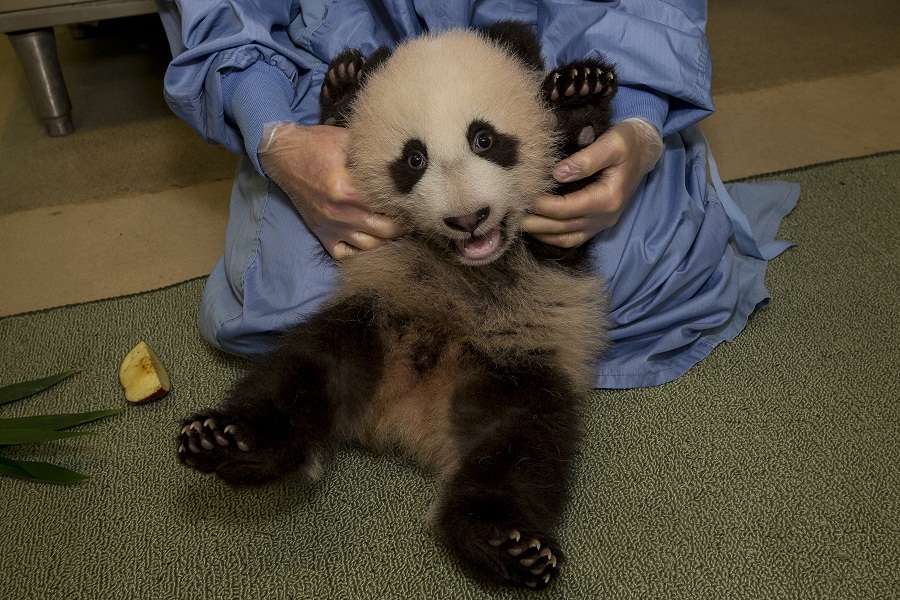Fidgety Panda Cub Shows Off Belly

Xiao Liwu, the 4-month-old giant panda cub born at the San Diego Zoo, adorably showed off his belly in new pictures released after his weekly checkup.
The baby bear, whose name means "Little Gift," got a final vaccination during his 15th exam on Thursday (Nov. 29), zoo officials said. Caretakers also were able to spot several teeth in his mouth and take his measurements during the checkup, even though Xiao Liwu does not like to stay still.
"It's very important to make sure that these interactions are a positive experience for him," Jennifer Parsons, an associate nutritionist at the zoo, said in a video after the exam. "What I've learned in working with him is he really does not like to hold still … I try to work around him and get whatever measurements I can."
According to the zoo, the cub now weighs 10.8 pounds (4.8 kilograms) and measures 25.5 inches (64 centimeters) long.
Though Xiao Liwu is able to cruise around the exam floor, caretakers don't believe the cub is ready to navigate the tricky terrain of the zoo's panda exhibits. Zoo officials said the cub will remain with his mother, Bai Yun, in an off-exhibit suite of rooms before moving into a public habitat.
Xiao Liwu is the sixth giant panda born to Bai Yun at the zoo. All giant panda parents in the United States are on a research loan from China, the only place where the species still exists in the wild. Four of Xiao Liwu's siblings have already been moved out of California to join the Chinese panda conservation and breeding program.
Captive breeding is an important way to study and conserve the endangered species, as just 1,600 giant pandas are thought to be left in the wild. In addition to habitat loss from human activities and low reproductive rates, giant pandas' survival is also threatened by climate change. A study detailed in the journal Nature Climate Change earlier this month found that global warming could wipe out much of the bears' chief food source, bamboo, over the next century.
Get the world’s most fascinating discoveries delivered straight to your inbox.
Follow LiveScience on Twitter @livescience. We're also on Facebook & Google+.



